The Meaning of the Ten Sephirot (Spheres) The ten spheres represent the ten archetypal numbers, and overall there are 32 paths on the Tree of Life, whereof the first 10 are the Sephirot (spheres). The remaining 22 paths correspond to the lines or channels of energy that join the Sephirot together. Each of these paths corresponds to one of the 22 letters of the Hebrew alphabet as depicted in the image of the tree of life. The Hebrew alphabet is considered to be of great importance as a celestial code or blueprint for the cosmos. The 13th-century Zohar (Book of Splendor) is filled with references to the Hebrew alphabets importance, and many Jewish visionaries have highlighted that in mastering the Hebrew alphabet, an individual can gain supreme knowledge about the realm of matter. The tree of life however represents a series of divine emanations of God's creation itself out of nothingness (ex nihilo), the nature of revealed divinity, the human soul, and man's spiritual path of ascent. In this way, Kabbalists developed the symbol into a full model of reality, using the tree to depict a map of Creation. In my Hamsa Hand artwork from my Hebrew letters series, i have depicted the Tree of Life with the 10 sephirot in the Hamsa Hand with the letter Chet, the eighth number in the Hebrew alphabet, which also represents Chai - Life. What Are The 10 Sephirot? The Sephirot are believed to be ten forces or attributes through which God manifests Himself, as such the sephirot are not God, but they serve as a kind of medium in which these specific attributes may be ascribed to God. In Hebrew, the word Sephirah is related to the verb lesaper, which means to "tell", “express” or “communicate", and therefore the function of the sepfirah is also to communicate an attribute. The word is also connected to the word 'saphire' (in Hebrew 'sapir') which is a gemstone known for it's brilliant and illuminating qualities that give light. Hence another function of the sephirot, apart from the expression of the attributes, is to serve as vessels that bring or give Light. THE PLACEMENT OF THE SEPHIROT The different placements of the spheres on the Tree of Life serves to give us an idea of the nature of the sephira. For example, Keter - the Crown - is on the top of the chart whereas Malchut - Kingdom - is placed in the bottom of the chart. The reason is that Keter is considered to be the initial or primary connection between God and the world , and symbolically this is represented by placing Keter at the top. In contrast, Malchut which is the final Sephira is thought to be a summation of all the others, to be the connection between humans and the world, and to symbolize that it is the goal of creation with the physical universe and all that it contains (Kurzweil). Each sephira (sphere) of the 10 sephirot represents a force or attribute and this is a brief overview adopted from the Chabad.org source and other sources on the web: Crown ('Keter'): The word Keter means “crown” and stands above all the other Sefirot, like the crown stands above the head. Keter is the Sefirah that stands above all the Sefirot. Wisdom ('Chokhmah'): The first of the Sefirot is called Chochmah. Chochmah is made of the words koach mah, meaning the potential of 'what is'. It represents the original idea, and is often referred to as the likings of the first flash of intellect, where all the details of the idea is contained, however it is not yet defined. It is everything in its potential, and this potential has been equated to a dot, in which everything is contained, but nothing is yet actualized or given definition. In the Tetragrammaton (the four-letter biblical name of the God of Israel 'יהוה in Hebrew and YHWH in Latin script), this is represented in the first letter, yud, י, which resembles a dot. Understanding ('Binah'): The second Sefirah is Binah. Binah means, “to understand or derive one matter out of another matter.” We can understand Binah in the way that it takes the original idea and expands and develops it both in breadth and depth, and thus it makes the original idea more crystalized and clarified than it was in the Chochmah, where the idea was undefined. As such, the previous idea that was in a very concentrated form, is now revealed and understood and this is what Binah represents. In the name of God, Binah is the letter 'hey' ה. Its shape, which is more elongated and comprised of strokes, implies the expansion of the dot in both breadth and length. Chochmah and Binah can be understood as being equal, as two good friends who can never be separated and in the book of the Zohar, they are described as “a dot in the palace,” with the dot Chochmah being realized in the palace of Binah. The koach mah of Chochmah (potential of “what is”) is thus realized in Binah. Mercy ('Chessed'): Chessed which means loving-kindness, is the attribute which spreads kindness and benevolence to all without limit. It is thought that Creation itself is an act of Chessed, as it is stated, “The world was built with Chessed.” Chessed is also the total outpouring of what is known as Shefa שפע, abundance, and Chessed is the divine attribute which describes the function of expansion. Strength ('Gevurah'): Gevurah stands for strength, judgment, law, and power and Gevurah is the attribute of restraint as it has the power and ability to limit and contract. As Chessed causes an outpouring of energy, Gevurah on the other hand functions to control, contract, and limit the flow, providing an equilibrium between expansion and contraction. The patriarch Isaac is often thought to parallel with Gevurah In the biblical story of the binding of Isaac (known in Hebrew as the Akeda), where Abraham was commanded by God to sacrifice Isaac, Isaac restrained his emotions magnificently, because of the dominance of this Sefirah of Gevurah within him. Gevurah is also called “law” and “judgment” (Din). This is because judgment demands that Chessed should be distributed justly and in proportion to the recipient’s merit and not merely in a boundless, unwarranted way. I have created an artistic interpretation of the Binding of Isaac (Akeda) in one of my Hamsa Hand artworks and Hamsa Hand art prints, as depicted in the image below. Beauty ('Tipheret'): Tipheret is the central balancing sephirah of the whole Kabbalah Tree of Life, as every sephirah, except Malkhut, flows into it. As such, Tipheret creates a synthesis of both Chessed and Gevurah in order to reach its broader goal which is to aid in the development of the human being to his greatest potential. Tipheret blends Chessed and Gevurah with harmonious and beautiful results, and it is also referred to as Tipheret (beauty) for its harmonious blending of all the sephirot. On the tree of life, Tipheret is the midway point on the direct line extending down from Keter to Malchut and Tipheret is thus located on the central balancing column of the tree. Ideally, it leans a bit toward Chessed and therefore it is also called Rachamim, which in Hebrew means 'mercy' or 'compassion'. Tiferet is also equated with “truth” (אמת, Emet) in the sense that both Chessed and Gevurah agree to its flow. Victory ('Netzach'): In Hebrew, the word Netzach generally translates to 'eternity', however in the context of Kabbalah it refers to 'perpetuity', 'victory', 'endurance', 'conquering' and to 'overcome'. Netzach is therefore thought to represent the idea of dominance. For example, by giving in an unlimited way, one is overwhelming the other, and in this respect Netzach is thought to be an extension of Chessed. Majesty ('Hod'): However, Hod is just the opposite from Netzach as it is thought to be an extension of Gevurah, as it denotes with strain to the point of submission. In Hebrew, Hod stems from the word Hodaah meaning to “thank,” “admit,” or “submit.” As such, a total dominance over another is considered a Netzach relationship, while on the other hand, a total submission is a Hod relationship. Yesod, the next sephirah, balances the Netzach and Hod as it facilitates communication, and is thought to represent the foundation of the world. Yesod ('Foundation'): The Hebrew word for 'foundation' is 'Yesod' ( יסוד ). Yesod is associated with the souls ability or power to contact, connect and communicate with outer reality (represented by the sephirah of malchut). It can be understood just as the foundation (yesod) of a building is in its “grounding,” - its union with the earth (malchut). The yesod is also thought to correspond with the procreative organ of man and yesod is thus the foundation of generations to come. The power to procreate is believed to be the manifestation of infinity within the finite context of the created human being. As such, the yesod is the “small” and “narrow” bridge between the infinite potential of procreation that flows into it and its actual manifestation in the descendants of man. It is also for this reason, that the sephirah of yesod is also identified in the Torah with the tzadik (righteous one), as is said: “and the tzadik is the foundation of the world.” Kingdom ('Malkuth'): The last Sephirah of the 10 Sephirot known as Malchut. In Hebrew the word Malchut means Kingdom. The Malchut sephira does not exert any influence of its own except that which the other Sephirot flow or channel into it, and it is a summation of all the other sephirots that has appeared above it - an ultimate gathering of all the resources and the fruits of one's labour. As such, on the one hand, malchut receives all that it has from the other sephirot and is described in the Kabbalah as "having nothing of her own". The book of Zohar compares malchut to the moon which has no light of her own. On the other hand, malchut is the final revelation in which the entire process began; it was for the purpose of malchut that all the sephirot emerged. Thus malchut is both the receiver and the consummation of giving. To Sum Up The 10 Sephirot Malchut is the completion of the Sephirot. The first group of 3 Sephirot dealt with an idea which manifests in the mind. The second group of 3 Sephirot are connected to those of the heart of the emotional realm where the idea is judged and evaluated. In the third triad group of the Sephirot the idea is not merely evaluated emotionally, but action comes in to play and the idea is brought into being in the world. At last, the Malchut represents the real manifestation of the idea in the world of reality. The teachings of the Kabbalah and the Jewish mysticism is a complex and fascinating field of study. This article only scratched the surface in order to give an idea of the symbol known as the Tree of Life that i have used in my Hamsa Hand art. If you are interested in more symbolism and if you wish to learn more about other symbols that i use in my Hamsa Hand art and Hamsa Hand art prints that i offer in my shop , you can discover more about all the symbolic elements that i use here. On my blog you can read about the meaning and origins of the Hamsa Hand symbol itself, as well as the meaning and origins of the Eye or Evil eye symbols, the dove symbol, the eagle and the double headed eagle symbol and the fish symbol. References: http://www.chabad.org/library/article_cdo/aid/361885/jewish/The-Sefirot.htm http://www.walkingkabbalah.com/kabbalah-tree-of-life-sephirot/ http://www.inner.org/sefirot/sefyesod.htm Kurzweil, A. Kabbalah for dummies.
4 Comments
Many political entities across the world today, use an eagle in their official emblems, for example in the Great Seal of the United States of America. The symbol of the eagle is however older than heraldry itself and can be traced back to ancient Egypt, to Greek mythology and ancient Rome and to the Judeo-Christian scriptures. With its ability to fly high, the eagle is also spiritually symbolic in that it can rise in some sense, above the material world. In my Hamsa Hand artworks and Hamsa Hand prints I use the eagle as it also symbolizes divine and spiritual protection, and is thought to bring courage and wisdom.
The ancient Egyptians depicted the Bennu as a heron, and considered it to be the sacred bird of Heliopolis, city of the Sun where it only came back to Heliopolis to die and be reborn as it's actual home was in the Arabian desert. Bennu was associated with the Egyptian Sun God Ra and with Osiris, God of the Underworld. Bennu symbolises rebirth, because of its ability to rise from its ashes. To the ancient Egyptians it also symbolized wealth and fertility.
As a god of the sky, the Eye of Horus also has a special significance and you can read more about the Eye symbol that i also use in my Hamsa Hand art in this article.
The Eagle in Greek Mythology The ancient Greeks also regarded the eagle as a sacred emblem of Zeus who was thought to be the god of the sky and god of thunder. Zeus was also the king of the gods of Mount Olympus. The Roman equivalent of Zeus is Jupiter. The eagle was thought to run errands for Zeus, as a messenger, and Zeus is quite often identified with the eagle and even taking on the eagles form.
The Eagle symbol in Judaism In my Hamsa Hand art i love using the symbols of the eye, the fish and the dove as well as the eagle which is the most prominent bird in the Torah. In Hebrew the word for eagle is 'Nesher' however some suggest that a nesher is more likely a griffon vulture. The symbol however is significant in that God saved the Israelites from Egypt '..on the wings of the eagle'. Psalmists often refer to God in the imagery with attributes of an eagle, for example in Psalm 103:5:
In Psalm 91:1-4 God is referred to as an eagle;
Native American culture The majestic eagle and its features of strength, power, vision and acuity has shown its symbolic presence in many cultures and religions, from ancient mythologies to the Roman empire. The spiritual nature of the eagle was also used in Native American culture as Native American Indians were a deeply spiritual people. The Native Americans told their narratives, thoughts, ideas and their dreams from generation to generation by using different symbols and signs such as the eagle symbol. For the Native Americans, the eagle symbolized courage, bravery, wisdom and strength and it served as a messenger of prayers to the Creator - the Great Spirit. The eagle itself became a symbol of the Great Spirit because it sees all things from above. The eagle was associated with balance due to its ability to live in two realms - that of the spirit and that of the realm of the Earth. Since there were many tribes of Native American Indians it is however not possible to generalize the most common meaning of the Eagle symbol or pattern. The wings of an eagle also represents the balance needed between male and female, each one dependent upon the strengths and abilities of the other. Among the Cherokee tribe, a dance called the Eagle Dance represents strength and power. Many native headdresses are also made of eagle feathers as each feather on the headdress represents an honor or incident of bravery. Images of eagles and their feathers are used on many tribal logos as symbols of the Native American Indian. It is thought to be the highest honour to be given an eagle feather and of all the feathers, the Golden Eagle feather was the most coveted and the most significant, generating a lot of respect from other members of the tribe. Today it is illegal to possess, use or sell eagle feathers by federal law—a policy that is meant to deter hunters from poaching wild eagles for their feathers or body parts, however Native Americans who are members of federally recognized tribes can obtain a permit under the Federally Recognized Tribal List Act of 1994 to gain access to golden eagles and bald eagles for traditional and ceremonial use. There is much more to learn about the eagle symbol as this article is not exhaustive. You can read about the double-headed eagle in my blog post and explore the other symbolic elements that i use in my Hamsa Hand art and that you can find in my Hamsa Hand prints
Origins of the double-headed eagle The two-headed eagle is of Hittite origin. The Hittites were an ancient Anatolian (modern-day Turkey) people who formed an empire between 1600-1180 BC and the Hittite Empire reached great heights during the mid-1300s BC, when it spread across Asia Minor, into the northern Levant and Upper Mesopotamia (CC BY-SA 4.0) Following the Hittites two-headed eagles, there is a gap of almost two millennia before the double-headed eagle motif reappears. Jewish Heraldry and Chandeliers in synagogues The symbol is not considered to be a jewish symbol in itself, however the double-headed eagle was a common heraldic item that was used on chandeliers in Ashkenazi synagogues and on objects such as menorah's, torah shields, as well as as on jewish tombs and in the home, throughout Europe until the Second World War. Like others, European Jews used heraldry and adopted coats of arms, and contrary to the belief that heraldry was reserved for nobility or knights, it appears that the Jewish use can be traced back as far as to the 14th century. The two-headed eagle consists of the body, wings and claws of an eagle and has two heads, however in my Hamsa hand artworks I have used just the two heads connected to the body. Since ancient times, objects and lights have been adorned with symbolic imagery and many symbols are associated with light. In pagan art for example, the figure of the Roman god Jupiter (in Greek mythology the equivalent is Zeus) can be seen under a canopy-shaped handle of a bronze oil lamp, and the thunderbolts recall the divine origin of fire. Chandeliers from the 17th and 18th century found in the synagogue in Worms and in Prague, showed Jupiter on an eagle with thunderbolts, reflecting the association with celestial light (Rodov, 2004). Some scholars have suggested the use of the double-headed eagle among European Jews were a sign of loyalty to the government, however others suggest that its symbolism must be found in the interplay of its connection to light as well as its religious and political connotations in the specific countries and times (Rodov, 2004). Jewish heraldic shields had biblical motifs of menorah's and the star of David. Jews also used animals in the heraldic emblems of which the lion was notable, among the Christians too, as well as the eagle. Unique heraldic seals were also used by some Jewish communities such as the Jews in Paris who during the 13th century used the eagle rising on a fleurs-de-lys. In Jewish art, the double-headed eagles have usually been found in the accompanying inscriptions in ceiling paintings of wooden synagogues. The double-headed eagle however has been absent in the Jewish written sources where the single-headed eagle is more prominent. For more information about the double-headed eagle, the articles listed in the references are recommended. You can read more about the symbolism of the eagle itself that i use in my HAMSA ARTWORK in my blog post about the meaning of the eagle. Reference: Ilia Rodov, “The Eagle, Its Twin Heads and Many Faces: Synagogue Chandeliers Surmounted by Double-headed Eagles,” Jewish Ceremonial Objects in Transcultural Context (Studia Rosenthaliana, 37, 2004), pp. 77-129. http://www.hubert-herald.nl/TwoHeadedEagle.htm#Twoheadedeagleegypt
Like most ancient symbols such as the ones i use in my Hamsa hand artworks such as the Eye symbol and the Fish symbol its origins can be traced back through history and can be found in many cultures and religions. From ancient to modern times, the long tradition and popularity of the dove symbol has helped it develop many layers of meaning as well as interpretations which can be seen in art, iconography, and religious texts. Pablo Picasso the great Spanish painter is one example of how the dove became an icon of peace through the use in art, and it became a modern symbol of peace when his 'dove' was chosen as the emblem for the World Peace Congress in 1949. In religious texts, it is hard not to think of the biblical story of Noah and the great flood. It is possibly worthy to mention that the word dove is usually used in the aesthetic contexts of religion, literature and art, whereas the word pigeon is often used in contexts of sport, different breeds and culinary use. ORIGINS OF THE DOVE SYMBOL The birds relationship with humans has been revealed since ancient times through accounts of its ability to adapt to domestic life and to be tamed. In Sumerian Mesopotamia (modern day southern Iraq) an archeological find revealed pigeon images next to the Mother Goddess which was worshipped at the time, which dates back to the Bronze Age (2400-1500 BC). This mother-goddess also known as Ishtar, was portrayed holding a pigeon. The worship of the mother-goddess spread to Crete and Cyprus, where she was portrayed with doves on her head. THE DOVE IN THE CLASSICAL WORLD The association with doves from the mother goddess Ishtar was continued in Greek classical antiquity where the doves were associated with Aphrodite (Venus), the goddess of love and sexuality. The ancient Greek word for dove 'peristerá' possibly comes from a Semitic phrase 'peraḥ Ištar' which means "bird of Ishtar". In Greek mythology, doves or sparrows were said to fly Aphrodite's chariot and in exchange for blessings and favours in matters of love, pigeon offerings to the goddess were made. In the temple or shrine of Aphrodite in Daphni 10 miles northwest of Athens, small offerings of white doves made of marble have been found. An attic inscription dating back to 283-282 BC during the Hellenistic period, was also found referring to an official offerings of pigeons or doves in order to purify the sanctuary of Aphrodite. Another greek goddess known as Demeter (Ceres), was also sometimes associated with the dove symbol. Demeter was thought to be the goddess of the harvest, fertility of the earth, and to be another version of the Mother Goddess. The goddess Eirene, goddess of peace and harmony was also shown representing a dove and an olive branch - the olive branch itself a symbol of peace. Pax, the Roman version of the goddess of peace, was also frequently depicted holding an olive branch. THE DOVE SYMBOL IN THE BIBLE In biblical theology, the concept known as the law of first mention is used to teach that when a number, a person or an animal is first mentioned in the Scripture, it often sets the theme of that particular mentioned item throughout the Scripture. Overall the dove appears many times throughout the Bible, however the dove was first mentioned in Genesis 8:11 in the biblical story of Noah's Ark after the great flood. The story of the dove (Hebrew: yonah / יּוֹנָה ) and the olive branch (Hebrew: alei-zait / עֲלֵה-זַיִת) appears:
THE DOVE IN JUDAISM In judaism the dove (yonah) is a symbol of the Holy spirit referring to the spirit of God which hovered like a bird over creation, divine love, of deliverance and forgiveness. It also symbolizes the Jewish people, longing for peace and rest, as well as love. Some biblical scholars have noted that the Babylonian Talmud resembles the Spirit of God that hovers over the waters at creation as a dove.
In the beautiful and erotic Song of Solomon, the dove symbol is also frequently used as a term of endearment:
The Talmud gives another explanation of the metaphor of the dove and its connection to the Jewish people:
THE DOVE SYMBOL IN CHRISTIANITY In Christianity the dove symbolizes the Holy Spirit. As in the ancient world were the dove represented the divine, during the time of the New Testament doves were already quite associated with God and his Spirit and early Christians took on the imagery and increasingly depicted the Holy Spirit as the dove. In the New Testament, the Holy Spirit is for example specifically mentioned as arriving in the form of a dove during Jesus’ baptism.
It is a symbolic structure located in the Indian city of Chandigarh. The open hand also resembles the shape of a dove and the structure symbolizes "the hand to give and the hand to take; peace and prosperity, and the unity of mankind". The Hamsa hand or hand symbol and the dove symbol are thought to be universal symbols of protection and peace, and much more can be explored in the various existing literature for further reading. INTERPRETATIONS OF THE FISH Universally the fish symbol has been found to represent fertility, success, good luck, harmony and emotions. When threatened, often fish will swarm together as in the photo of this sardine swarm, providing each other protection. The fish are naturally connected to the element of water which is the element often connected with healing, emotion and meditation. Fish are also considered to be connected with a sense of purposeful movement due to the rough currents that they encounter in their environment and that they overcome. This is a metaphor to life where very often rough currents and challenges can prevent or hinder people in reaching their goals. The symbol of the fish therefore reminds us of overcoming obstacles and stretching our own limits. Another interpretation for the fish symbol is the connection with fertility. Due to the fact that fish tend to lay thousands of eggs at a time, the fish represents not only fertility, but also success, thought processes, intelligence and inventiveness! As with other symbols such as the Hamsa hand itself and the eye symbol, the symbolism of the fish has different variations from culture to culture, and in some cases the species of the fish itself hold unique interpretations. THE FISH IN JUDAISM The first time in the Torah that God speaks to any living creature, the speech is directed at fish. In Genesis 1:22
In Judaism the fish are used in ceremonies and blessings are said for the fish, human beings and the Sabbath - as such the fish are considered sources of blessings. The fish symbol is also connected to the Sabbath - the 7th day- as the numerical value of the word fish dag equals the number seven. As such, on the Sabbath it is traditional to eat fish. On Rosh HaShana it is also customary to place or eat the head of the fish, symbolizing the wish to be at the "head" of the community as well as in righteousness. SYMBOL OF FERTILITY Their symbolism with fertility and abundance can be seen in an example when Jacob blessed the two sons of Joseph, Jacob said: "Let them multiply in the midst of the earth" (Genesis 48:16) In Hebrew, the word for "multiply" ve-yidgu derives from the word fish dagim. PROTECTION FROM THE EVIL EYE In the sea the fish are covered by water and thus many rabbis note that the fish are more protected from the Evil eye - a glare which is cast with intentions to cause harm. The Talmud tells us the “Evil Eye” has no effect on fish and therefore the symbols is popular among jewish people, and can be seen in many amulets against the “Evil Eye.” The fish symbol has also appeared at many entrances of private homes such as of the Jews in Djerba, North Africa and can still be seen there to some degree today.
(I) Iesous (ch) Christos (th) Theou (y) Yios (s) Soter, i.e. Jesus Christ, Son of God, Savior. The Christians used the symbol of the fish as a secret symbol to express their conviction, as well as a way to mark meeting places or tombs. Christians were also called Pisciculi. The root of the Latin word is "fish", and the Apostles were also often referred to as "fishers of men". The fish symbol also plays a role in the gospels, some examples include:
THE LETTER NUN (N) In Arabic the letter 'N' (nun) is the word for fish and in Islam, according to the Quran the fish symbolizes eternal life. In Arabic, the prophet Jonah is called Dhun-Nūn. In Hebrew, in Aramaic and Phoenician the letter Nun is also related to a fish or great whale. Although the word "whale" is often used in English versions of the Jonah story, the Hebrew text actually uses the phrase dag gadol, which means "giant fish". In my upcoming articles about the Hebrew letters relating to my HAMSA 22 - HEBREW LETTERS I will further write about each Hebrew letter and its meanings. However, at this point it is interesting to regard that in the Phonician, Hebrew, Greek, Latin and English alphabets, the letters M and N carry a thought-worthy significance. The letter M is Mu (μ) in Greek and Mem (מ) in Hebrew and Phonician tongues. This word in and by itself means "the sea" and in Hebrew symbolizes water mayim. Their ancient as well as modern shapes indicate that they derive from the Egyptian hieroglyphic forms and of a wave or water mark. The letter N is Nu in Greek and Nun in Hebrew and Phonician and as previously mentioned means "fish." In the alphabets these letters follow one another in the sequence, and thus it is as if one reads Nun, Mem - "The sea; the fish." In the practice of Feng Shui - a way of decorating and by using energy forces to harmonize individuals with their surrounding environment - many Chinese have an aquarium at a well thought placement in the house or office as it is believed that this will enhance wealth, career and luck. The fish also here represent fertility! As fish often swim in pairs, in China they also symbolize fidelity, unity and is therefore often given as a wedding present. THE FISH IN BUDDHISM In Buddhism the fish symbol is one of the 8 Auspicious Symbols. The fish symbolizes the art of living in a state of fearlessness, without danger of drowning in sufferings, and freely migrating from place to place. There are many more interpretations and stories about the fish symbolism and this article is therefore not a comprehensive list. The fish remains a powerful symbol across cultures to this day, and to many people the fish symbol still plays a significant part of their daily lives. Reference: The Encyclopedia of Jewish Symbols, Ellen Frankel, Betsy Platkin Teutsch
In English the hamsa hand is often referred to as ‘the hand of God’ and sometimes ‘the healing hand’. The hamsa hand is a thought to be a popular symbol and can be found throughout the Middle East and northern Africa, in particular among the Islamic and Jewish faiths. Among Levantine Christians it is called 'the hand of Mary', for the Virgin Mary. As a Muslim symbol the hamsa hand is known as ‘the hand of Fatima’ referring to Fatima the daughter of Muhammad. In Islamic culture it is thought to be a symbolic representation of the five pillars of Islam. As a Jewish symbol the hamsa is related to as ‘the hand of Miriam’. The hamsa hand is however a universal protective symbol thought to provide its owner happiness, luck, good health, and good fortune. The hamsa also offers guards from harm caused by the evil eye. Below are two examples of my unique Hamsa Hand artwork that i create in ink. Check out my Hamsa art on my website & find beautiful art prints in my shop! ORIGINS OF THE HAMSA HAND As with most ancient symbols it can very be hard to trace the exact date and origins of the hamsa hand. Different scholars believe that the the symbol is of Pagan origin, later adopted by various religions. Possibly the hamsa hand symbol originates from Mesopotamia (modern day Iraq and parts of modern-day Iran, Syria and Turkey), ancient Egypt or Carthage (modern day Tunisia), where a Punic and Phoenician goddess Tanit was worshipped. Some turn to Egypt to trace the Hamsa hand source, referring to the Hand of the All-Goddess, Isis whilst in Greece, the symbolism was seen in connection to Aphrodite. Yet another historic pre-curser or link to the hamsa hand is an amulet which was known to ancient Egyptians as the 'Two Fingers'. The 'Two Fingers' amulet was worn as a protective talisman by both the living and the deceased. It represents the medius and index fingers.
THE SHAPE OF THE HAMSA HAND SYMBOL The Hamsa can appear in different shapes, sometimes the palm is pointing upwards and at other time downwards, which invite many different interpretations. Some hamsas can be found with two symmetrical thumbs as well as asymmetrical. Either form may be displayed with the fingers pointing up or down. The centre of the palm is very often decorated with other symbols, especially the eye, yet various cultures may decorate the hand with symbols and images that are relevant to them. THE HAMSA HAND IN THE JEWISH WORLD People have mostly associated the hamsa hand with Islam. Its way into Jewish culture, and its popularity in Jewish Sephardic and Mizrahi communities, can also be traced through its use in Islam. Over time, the hamsa hand has undergone a kind of ‘Judaization’ which has led to the acceptance and legitimization of the hamsa hand symbol in the entire Jewish world. It is also considered a very popular and treasured object in the modern State of Israel where it is increasingly embraced by the secular Israeli population as well. According to some scholars this process could happen because Jews in both Christian Europe and Islamic countries take on the folkloric elements of their host cultures. Among Jews living in other Islamic countries, including Iran, Afghanistan, Bukhara, Iraq, and Kurdistan the hamsa hand was very popular and often used at home as well as in the synagogues (Sabar, 2002).
For Jewish believers, the shape of the open hand also drew connections to the hands of priests (kohanim) who impart their blessing worshippers attending the ceremonies. Among the Jews of Europe they continued to use the stretched out hand as a characteristic sign of the priesthood. The hand in some circumstances thus played a dual role; for example, on a Torah ark curtain from Istanbul a pair of blessing hands appear representing the priestly blessings.
The tablet was hung on the wall as an amulet for protection, and on it above the fingers is written ‘safe-guard against the evil eye´, which points to the role of its more magical properties. The tablet is most likely based on the popular Islamic type depicted below, although the Jewish version is embedded with traditional Jewish ideas. The power and protective elements of the number five has been linked in various ways, for example that it was on the 5th day of Creation that the biblical blessings for the fish were spoken. The fish are in themselves symbols of success and fertility (Sabar, 2002) THE HAMSA HAND'S REVIVAL The Hamsa hand is today a fashionable and popular symbol that is increasingly embraced by Western cultures as well. It can be seen in fashion as well on objects and unique artwork which find its way into people's homes. There can be many reasons for this openness and usage for the ancient symbol in the Western cultures, beyond the aesthetic and fashionable aspect. Perhaps with the rise of social media where we expose our lives to a higher degree and reveal our successes and good fortune, there is also a higher need to seek out protective defense mechanisms, such as from ancient symbols as the Hamsa hand.
READ MORE ABOUT SYMBOLS USED IN THE HAMSA HAND Explore the different symbols i use in my Hamsa Hand artwork such as the dove, the eye, the eagle, the double-headed eagle, the tree of life, the fish and the pomegranate fruit ! You can also shop unique HAMSA HAND ART PRINTS in my Etsy store online and explore the Hamsa Hand art on my website ! FOLLOW ME ON FACEBOOK / INSTAGRAM Sabar, S. (2002). From Sacred Symbol to Key Ring: The Khamsa in Jewish and Israeli Societies
THE CURSE OF THE EVIL EYE The evil eye is a curse or a legend alleged to be cast by a malicious glare given to inflict harm, misery, or some form of bad luck on the person that the glare is cast upon. Giving someone “the evil eye” is a look where one intends for something bad to happen to the other person, either out of jealousy or pure malice. In many cultures, it is believed that the look is powerful enough to bring about actual misfortune for the unlucky person that receives the look, and many different cultures therefore take protective measures against it, such as through amulets and talismans. Wearing an evil eye as an amulet or hanging the talismans in the home is thought to bring protection against such evil forces. The curse of the evil eye basically stems from the belief that anyone who accomplishes great success or recognition will also attract the envy of those around them. That jealousy in turn reveals itself as a curse to end their good fortune. The Egyptians dreaded the evil eye which was ever present, and the Eye of Horus is an ancient Egyptian symbol of protection, royal power and good health. The symbol of the Evil eye has been mentioned in ancient literature stemming from classical antiquity, such as in Hesiod, Plato, Pliny the Elder, Theocritus and Plutarch. An example from Plato’s Phaedo 95b: “My friend,” said Socrates, “do not be boastful, lest some evil eye put to rout the argument that is to come. " He theorized that the human eye had the power of discharging invisible rays of energy that were sometimes strong enough to kill small children or animals. According to Plutarch, certain people have a stronger ability to bestow the curse, and those most proficient in delivering it are blue-eyed, perhaps due to this less common genetic feature in the Mediterranean area. As for the colour blue, according to Dr Nese Yildiran, an art history professor at Istanbul’s Bahçeşehir University, it definitely first comes from Egyptian glazed mud, which contains a high percentage of oxides. The copper and cobalt give the blue colour when baked. According to Yildiran, early Turkic tribes held a strong fascination with this shade of blue because of its connections with their sky deity, Tengri, and likely co-opted the use of cobalt and copper as a result. More and more people are seen wearing the eye symbol, including wearing the entire Hamsa Hand as amulets where the eye is also a common feature. The Hamsa hand is a symbol that is believed to symbolize protection and strength. Others prefer larger pieces of the Hamsa symbol and it can be seen in artworks, such as in my own Hamsa art. Many people hang pictures of the Hamsa Hand on the wall in their home for protection and good blessings. It is also often given as a gift when moving in to a new home or office or any other occasion. The eye symbol is truly a remnant from the very dawn of civilization, going back to some of humanity’s most persistent and profound beliefs. There are therefore many more symbolic interpretations of the eye not covered in this article. Should you wish to explore the symbol further, there is a lot of online information as well as a book specifically on the subject called: The Evil Eye: The Classic Account of an Ancient Superstition by Frederick Thomas Elworthy |
MAY-BELL
|





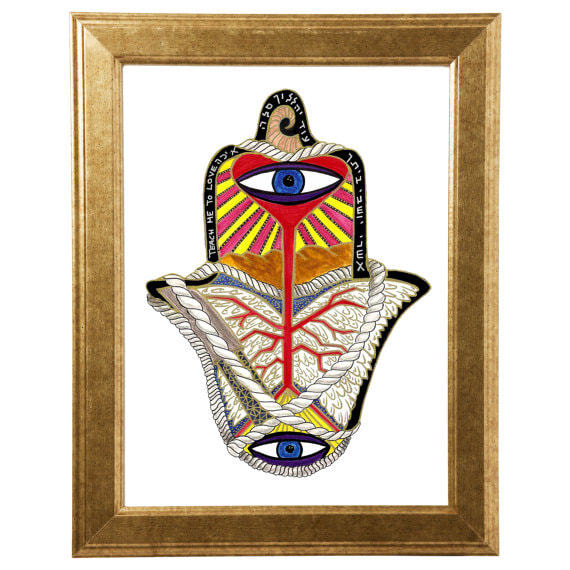





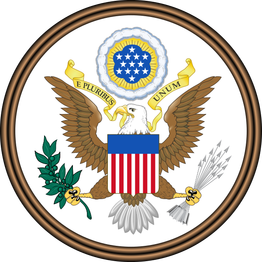
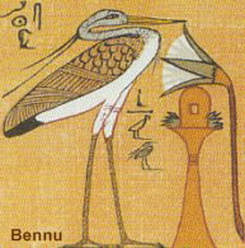







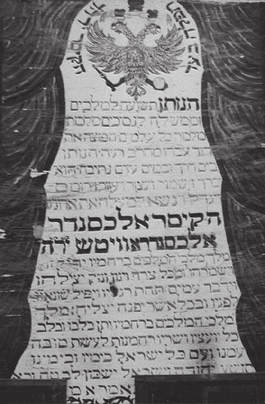












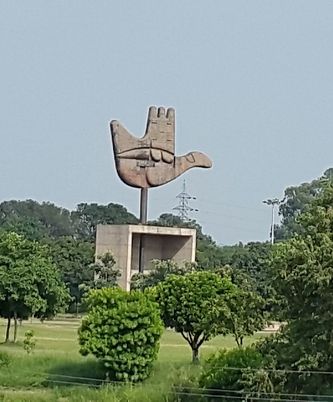




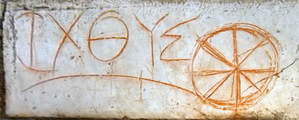

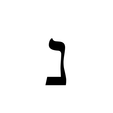

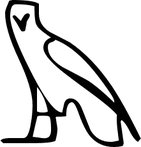


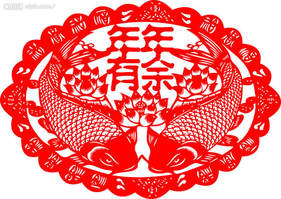






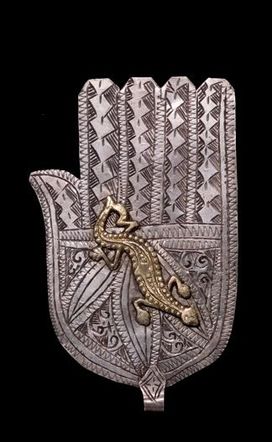
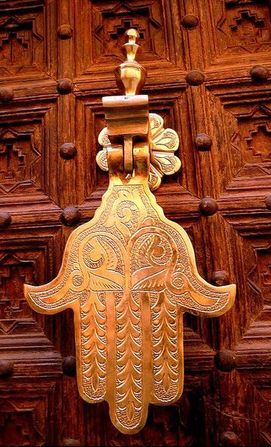







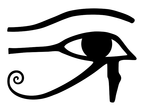



 RSS Feed
RSS Feed
